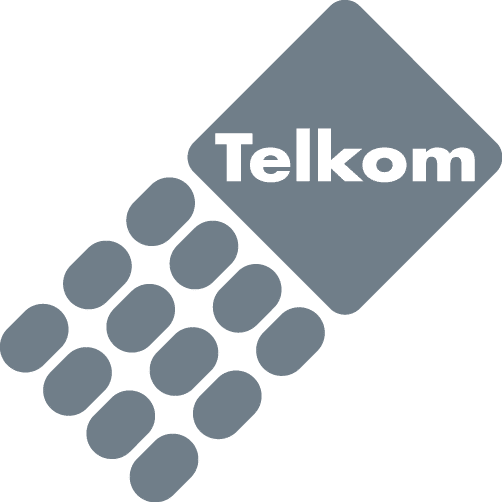In the age of social consciousness, brands are not just companies that make things; they are supposed to stand for something. It’s no longer a bonus; it’s a must. Consumers, investors, and communities crave companies that align with their values. This is where Public Relations (PR) plays a significant role. Traditional PR practitioners are the lifeblood of a brand, responsible for articulating its social responsibility, ethics, community engagement, and good deeds.
Brand Communications is not just about passing on information; it constructs narratives that frame the way the public sees things. If companies do the right thing but don’t tell people about it, it means they miss out on all sorts of opportunities to build goodwill and trust. Conversely, if they are perceived to overstate or greenwash, the potential for severe backlash is very real. In authentic, consistent, targeted social responsibility communication.
Why Social Responsibility Is Integral to Public Relations
Contemporary Public Relations needs to be more than just product placement and media relations – it needs to address societal issues. Well-read, Social responsibility has become an integral part in assessing brands. Whether it is environmental impact, diversity and inclusion, labour practices, or charitable efforts, consumers want transparency and action.
Today’s consumers, especially Gen Z and Millennials, are naturally attracted to brands that mirror their ethical values. A study reveals that more than 70% of consumers favour companies that have opinions on significant issues. Not only do PR reps have to tell you what the company is about, but we also must ensure that what we’re saying matches up.
When done right, socially responsible messaging can drive greater customer loyalty, improve employee morale, and foster stronger connections to the communities you serve. The authors of such messages are public relations professionals. They ensure the brand voice is authentic and substantiated and communicates effectively on the proper channels to reach critical audiences.
Integrating CSR into PR provides access to a broader range of storytelling opportunities. Whether the message is a new sustainability goal or a community development project, these stories of impact make a brand relatable and demonstrate charitable giving with no expiration date. Trust is currency in a competitive marketplace — trust earned through transparency, not mere marketing.
Key Elements of Effective CSR Communication in Public Relations
For social responsibility to become part of Public Relations, values are not sufficient; they must be represented through a planned communication process. The most successful CSR communication is straightforward, unambiguous, genuine, and consistent with the brand’s values.
There is no substitute for authenticity. Public selling campaigns must be matched with real deeds and measurable objectives. Hollow messaging or exaggeration (referred to as greenwashing) undermines credibility. It’s honesty about both what you’re doing right and what the problems are that builds trust.
Data alone isn’t enough. Brand Communications practitioners need to convert CSR initiatives into human stories. So instead of “We cut emissions 30%,” here’s a better message: “Learn how our ultra-green warehouse has not only reduced emissions but improved local air quality too.”
Consistent messaging across channels is essential. CSR communications should be routinely incorporated into press releases, social media posts, website text, email communications, and even interviews with the CEO. PR must ensure that every point of contact accurately portrays the brand in the intended way.
CSR communications are not just for consumers – they should be directed at employees, suppliers, partners, and the local community. Open conversations and feedback loops demonstrate that it’s not just your brand talking, but listening too. Public Relations serves as a connecting entity between the company and society, which in turn leads to the creation of shared value and the development of a better relationship.
Challenges of Communicating Social Responsibility Through Public Relations
Although CSR communication is necessary, it also presents its share of difficulties. Transparency vs. Brand Over the years, one of the most common challenges in Public Relations has been the tightrope walk that Brand Communications professionals must navigate between openness and brand protection.
Companies would prefer to highlight their good work; they may be reluctant to share their imperfections. But today’s audiences appreciate honesty. Overhyping progress or suppressing missteps can backfire.
Internal alignment is another challenge. A Brand Communications message about diversity is a classic example, and it’s hollow if internal practices and representation do not back it up. PR teams and agencies must collaborate with operations, HR, and corporate leadership to produce communications that accurately reflect reality, rather than aspirational fantasies. This convergence creates credibility and serves as the keystone of successful CSR communication.
There is still a significant risk of greenwashing. This occurs when companies overstate their sustainability measures without a genuine effort to support them.
Public Relations professionals need to closely examine all claims, add third-party certifications where applicable, and refrain from using words like “eco-friendly” without providing context or data. Precision earns trust; buzzwords destroy it.
There is also the barrier of measuring and proving impact. Success in CSR often takes years, and short-term measurements can be challenging to convey. Nevertheless, PR teams need to be able to report progress, such as annual sustainability reports, impact dashboards, or community-vetted stories.
A Strategy of Brand Communications A strategy is to communicate what is “accomplished work” as it is “work in process”, yet devoid of “obfuscation,” that is to say, in transparent/honest language that welcomes discussions over doubts.
Measuring the Impact of CSR in Public Relations Campaigns
Measuring the Effectiveness of Social Responsibility Communication: To calculate the return on investment and adjust the strategy, assess how it is on target. In Public Relations, impact results from a combination of quantifiable and unquantifiable indicators that demonstrate an audience being more aware, more trusting, and more engaged.
Media coverage is an important barometer. Monitor the volume, sentiment, and impact of press mentions related to CSR issues. Do reporters write about your efforts to be more sustainable? Have you been recognised in any industry awards or environmental rankings? Effective PR should generate positive exposure around your brand’s values and impact.
Engagement measures are also indicators. Evaluate how CSR content performs on social media (shares, comments, click-through rates) and monitor how your CSR campaign metrics stack up against regular product promotions. High engagement generally indicates that the message is connecting with your audience.
Site traffic — the editor of the website analytics is also telling. Pages that tout your sustainability commitments, community involvement, or DEI policies need to generate meaningful traffic, too. Track time on the page, bounce rate, and the number of CSR reports downloaded to gauge interest and comprehensibility.
Surveys and input from stakeholders provide qualitative depth. Check in with customers, employees and partners about how they view your brand’s responsibility efforts. This information is used to inform future PR content and confirms your messaging.
Gauging the effect of doing the right thing, and showcasing it, means your PR isn’t just for show, it’s for purpose. By reviewing results, refining their approaches, and remaining accountable, brands can convey values that extend beyond marketing and establish long-term trust with their communities.
Conclusion
Social responsibility is no longer a corporate footnote — it’s at the heart of how consumers judge brands. In this new reality, Public Relations pros are ‘where the rubber meets the road’ when it comes to how a brand’s values are discussed, considered, and acted upon. CSR iterations of messaging need to cut deeper than hollow promises, to demonstrate actual commitments, continued steps, and an open dialogue with all involved parties.
When correctly managed, PR for social responsibility fosters brand trust, differentiates companies in crowded marketplaces, and strengthens emotional connections with consumers. And whether it’s combating climate change, advancing workplace equity, or helping in local communities, today’s consumers want to know not only what you sell, but also what you believe in. PR is the pipeline through which that message flows.
GET IN TOUCH WITH THE DIGITAL SCHOOL OF MARKETING
Do you want to become a digital public relations expert with the Digital School of Marketing? If you do, you must do our Digital Public Relations Course. Follow this link to find out more.
Frequently Asked Questions
Social responsibility communication in Brand Communications is a strategy to share a brand’s ethical practices, sustainability goals, and community engagement efforts with the public. This type of communication makes a brand more trustworthy than marketing claims by focusing on the actual work that has been done. Specifically, Brand Communications presents how the company makes the world a better place and contributes to the community. PR professionals ensure that this information is disseminated through media, storytelling, and stakeholder engagement to consistently convey corporate values and make them easily accessible to the public.
Brand Communications is vital for Corporate Social Responsibility because it turns the company’s work into stories. Many companies work on sustainability, diversity, or community programs, but it will remain unnoticed without PR. Brand Communications helps communicate these efforts to employees, customers, and the media, fostering transparency, building trust, and protecting the brand image. PR is critical to creating a message for stakeholders that resonates with the company’s values and builds hype, ensuring companies avoid authenticity drama when faced with social issues.
Trust is built through honesty and authenticity, and Brand Communications is the mediator of these. By sharing real stories of benefit and showcasing genuine goals, Public Relations tells authentic stories to society. It presents the most comprehensive overall picture, including successes and failures, to demonstrate a brand’s commitment to development and improvement. PR also utilises media and testimonials to enhance the brand’s credibility and foster customers’ trust, thereby increasing trustworthiness.
This is even worse when companies (read: PR practitioners) push all the right PR buttons and exaggerate their efforts or engage in ‘greenwashing’. If what a brand says can’t be seen in what a brand does, audience trust is quickly lost. It’s essential to maintain a consistent reputation, as discrepancies can be easily discovered in today’s digital world. CSR-related PR blunders—such as vague language, a lack of information, or dismissing stakeholders—can harm credibility. It is crucial that PR pros thoroughly vet messaging and that CSR claims are truthful, it adds, as well as being specific and supported by evidence, to avoid reputational damage.
PR metrics to measure CSR success include mentions in the media, share of editorial voice, engagement, sentiment, and feedback from stakeholders. Consider how effectively you are engaging in campaigning and how frequently you appear in respected publications within your sector, as well as whether your messaging is resonating. Track web traffic to CSR content, social shares and responses from surveys or interviews. The kind of qualitative impact — a better brand reputation, for instance — together with quantitative results, delivers a more complete sense of how well your Brand Communications is doing.
.
Absolutely. Public Relations is not only for big businesses — small businesses can and should communicate their work, sustainability practices, or ethical sourcing through PR. Small businesses are often the ones that have the most genuine and grassroots stories, which connect with people the most. Through pitching to local media, utilising social channels, and engaging directly with customers, small businesses can reinforce their strong, purpose-driven messaging.





















